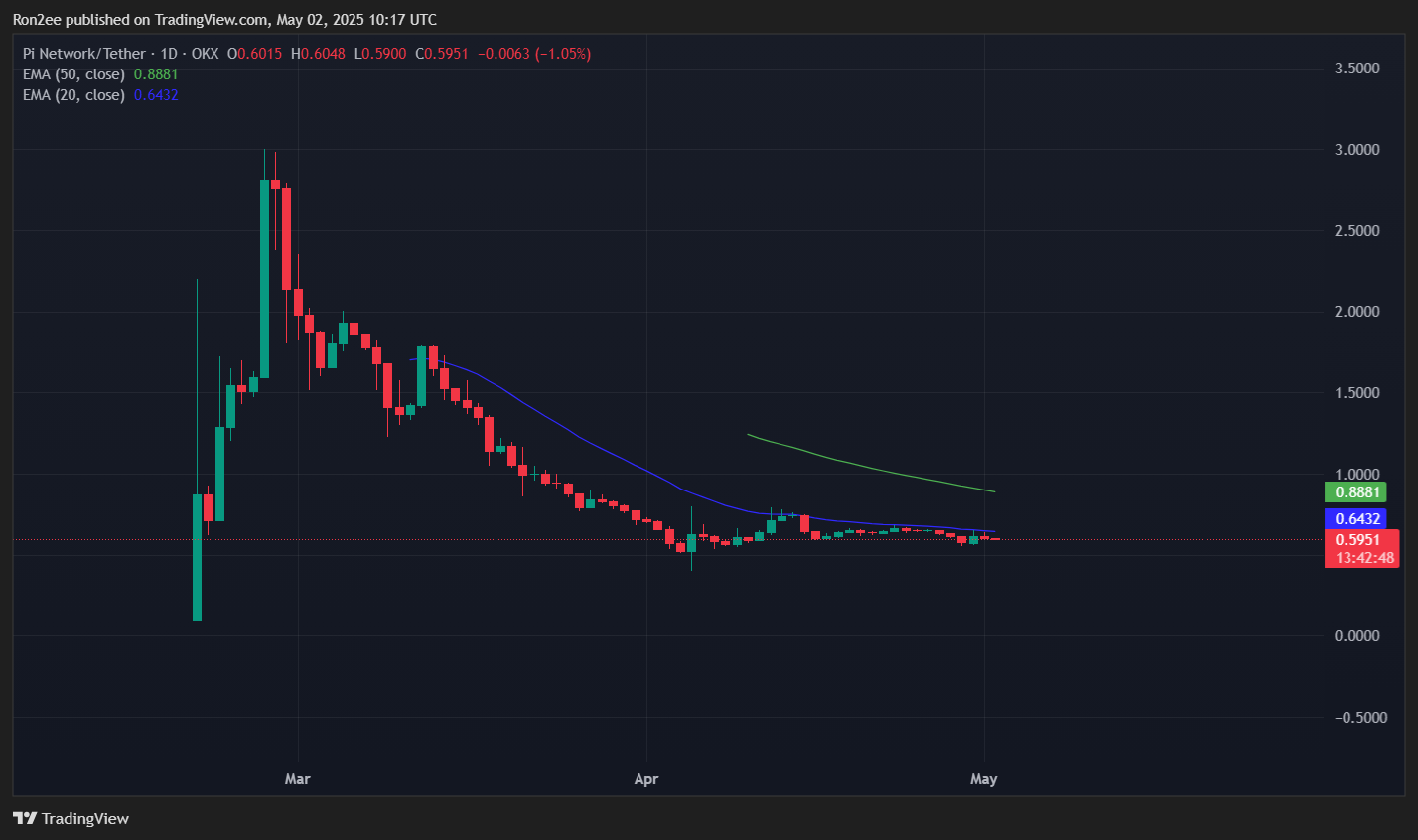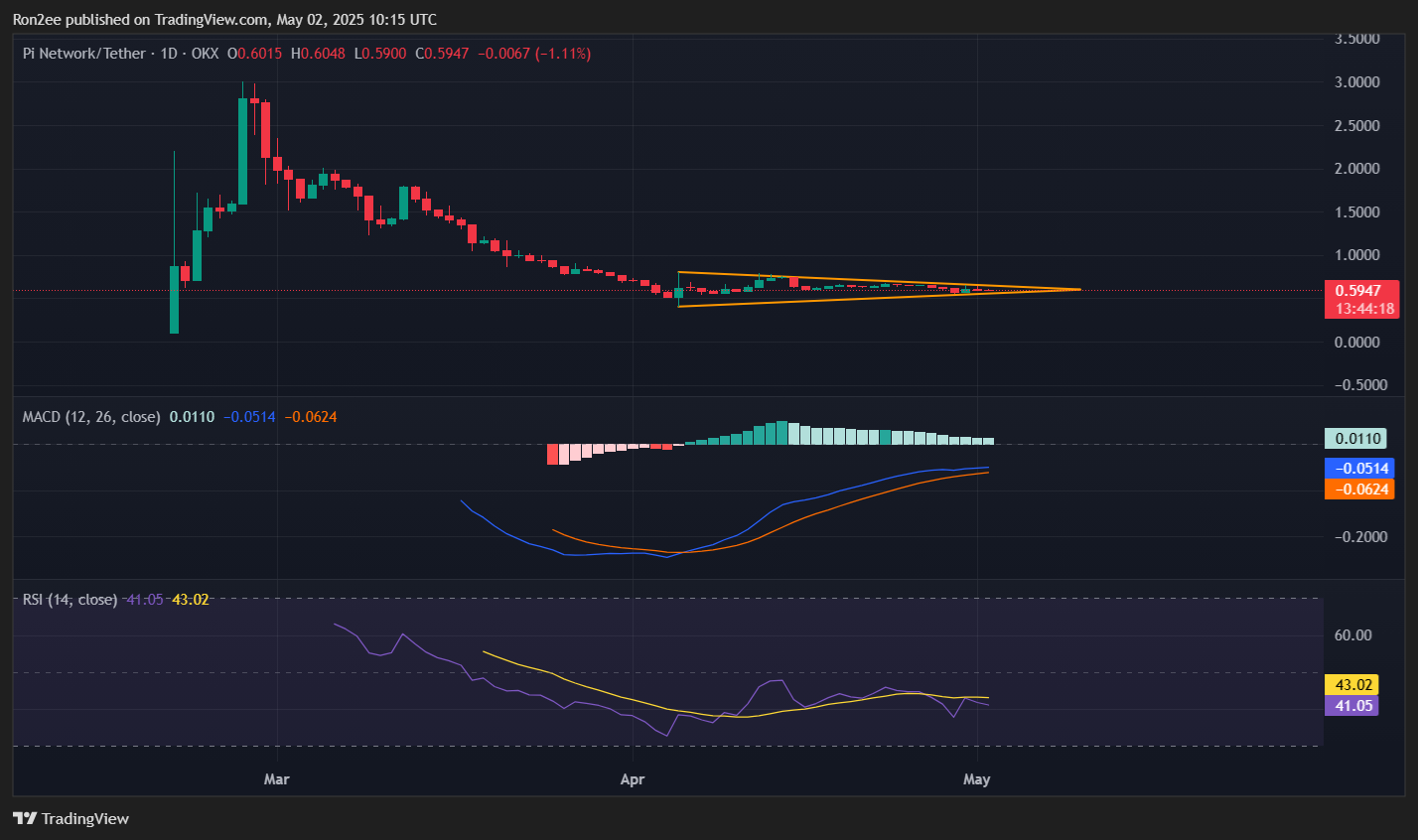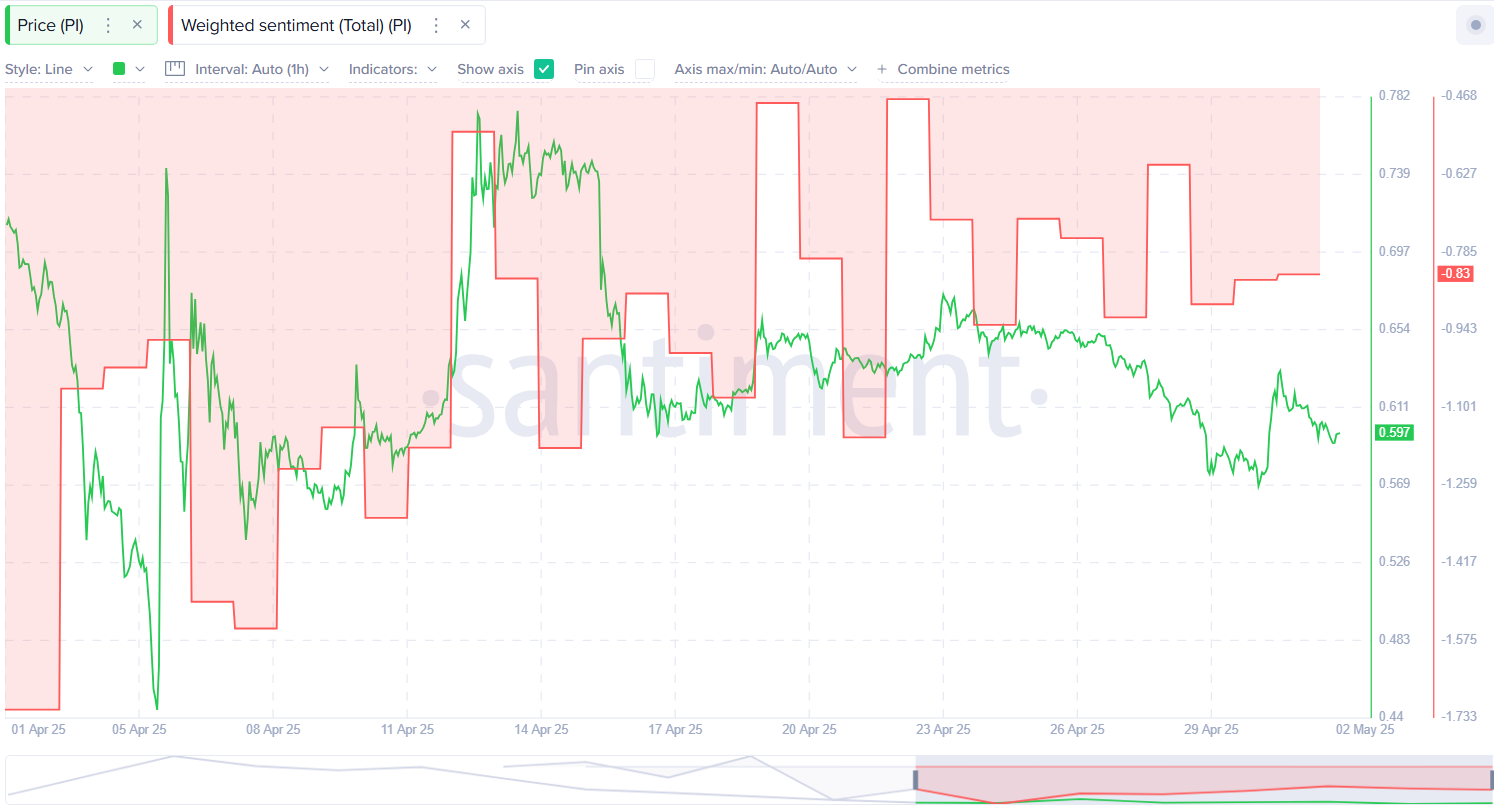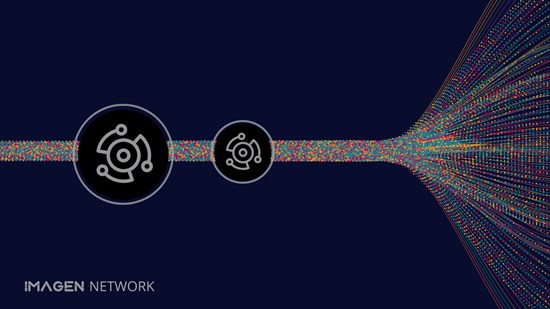PI, the native token of Pi Network, resumed its downtrend in May as it failed to hold the $0.6 support level amid bearish technicals.
Pi Network (PI) has fallen nearly 10% over the past week, exchanging hands at $0.59 as of press time.
Zooming out the charts, the token has lost over 23% of its value from last month’s high and nearly 80% from its all-time high of $2.99 reached in late February. Its market cap was seated at $4.1 billion, over a 40% drop in its daily trading volume, hovering at $75 million when writing.
Most of the recent selling pressure came from dilution fears. In April alone, about 21.4 million PI tokens were unlocked, worth roughly $12.3 million at today’s prices. While that’s a small unlock for now, investors are likely already bracing for much bigger unlocks coming down the line.
Looking ahead, the monthly unlock trend points to a steady rise in supply, with an average of over 131 million PI expected to hit the market each month over the next year.
Pi Network ecosystem is expanding
Despite its depreciating price, a host of ecosystem developments could reignite community hype and set it up for a major trend reversal over the coming months.
First, with Pi Network’s open mainnet now live, developers have continued to build a plethora of utility-driven dApps, including key platforms like 1Pi Mall for Pi-based e-commerce, Workforce Pool as a freelancing marketplace, and Map of Pi for discovering and transacting with Pi-accepting businesses.
The network had already reached its target of 100 dApps ahead of the Open Mainnet launch. Since then, developer activity has continued to grow, with recent additions like Piepump.fun, a memecoin launcher inspired by Solana’s Pump.fun, and Fruity Pie, a casual game where players can earn Pi as rewards.
Second, the Pi Network team has introduced the Pi Ad Network, a decentralized advertising platform that enables advertisers to purchase ad space using Pi cryptocurrency and allows app developers to earn Pi by displaying these ads within their applications.
This system creates a closed-loop economy: advertisers acquire Pi to pay for ad placements, and developers receive Pi as compensation for user engagement with these ads. By utilizing Pi for both transactions, the network ensures that value circulates entirely within the Pi ecosystem, reducing reliance on external advertising platforms like Google Ads.
Third, Pi Network has introduced .pi domains, which allows users to bid for custom domain names using Pi Coin. These blockchain-based domains serve as unique identifiers within the Pi ecosystem.
Accessible via the Pi Browser or through .pinet.com on traditional browsers, the domains aim to boost Pi’s utility while proceeds from auctions are slated to support ecosystem growth.
Finally, Pi Network is accelerating real-world adoption of Pi through community-driven events like PiFest and targeted merchant onboarding initiatives.
PiFest 2025, held from March 14 to 21, showcased over 58,000 active sellers across 160+ countries, with more than 1.8 million Pi users participating in Pi-powered transactions using the Map of Pi app to connect users with local businesses accepting Pi.
Potential exchange listings could boost PI
Some bullish momentum for Pi can also come from a potential Binance listing. Pi has already secured listings on several centralized exchanges, including OKX, Bitget, and MEXC; however, Binance has yet to list PI.
In a 2025 community vote, over 86% of nearly 295,000 Binance users supported the spot listing of Pi.
Binance listings typically result in more liquidity, higher trading volumes, and increased visibility for tokens. As the world’s largest crypto exchange by volume, a Binance listing could significantly boost Pi’s market presence and act as a key catalyst for broader adoption.
If Pi makes it to Binance, other tier-1 exchanges, such as Coinbase, Upbit, Crypto.com, and Kraken, that are yet to list the altcoin, could also follow suit.
PI price analysis
At the moment, Pi’s technical outlook remains bearish, with key indicators pointing to continued downside pressure.
On the 1-day/USDT chart, PI’s price continues to remain under the 20-day and 50-day exponential moving averages, signalling that bears are still in control and the short-term and medium-term trends remain under pressure.

The RSI is sitting at 41, which is below the neutral 50 mark and getting close to oversold territory.

On top of that, the MACD is also showing signs of fatigue, while the MACD line is still just above the signal line, they’re creeping closer together and could soon cross into a bearish signal, hinting at a possible momentum shift to the downside.
Hence, the next challenge for Pi would be to reclaim the psychological resistance level at $1 before a rally towards its all-time high could transpire.
According to one trader, if PI manages to break above $0.645, the upper boundary of a descending trendline formed since April 5, it could rally to $0.81–$1, as long as trading volume keeps increasing.
However, the trader warned that if PI drops below $0.57, it could trigger further selling and push the price down to $0.40 or even lower.
Since Pi is a community-driven project, social sentiment will continue to play a critical role in shaping its price trajectory. For now, that sentiment remains largely negative according to data from Santiment.

At press time, PI was down 3% over the past day, trading at $0.59 per coin.
Disclosure: This article does not represent investment advice. The content and materials featured on this page are for educational purposes only.









